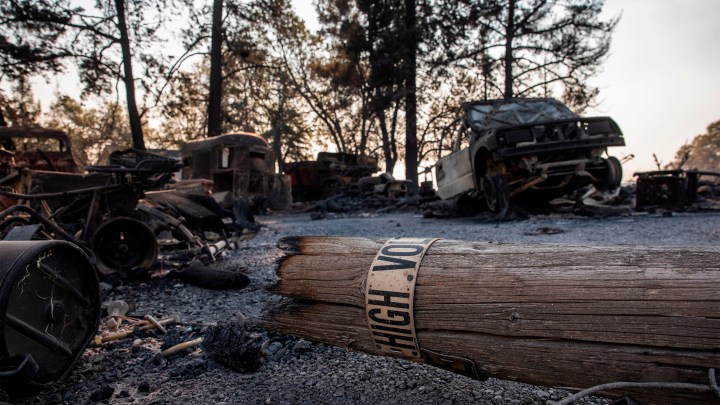
California mayors want customers to run PG&E

The devastating Camp Fire started a year ago this coming Friday, killing 86 people and leveling the town of Paradise, California. Investigators said the fire was started by a faulty electric transmission line owned by Pacific Gas & Electric, and liabilities from that fire helped push PG&E into bankruptcy last January.
Now there’s a battle over PG&E’s future, and the way in which it should emerge from Chapter 11 bankruptcy. One idea being championed by 22 California mayors is to turn it into a publicly-owned cooperative utility, run by customers instead of shareholders.
Cooperative utilities let customers elect the board of the utility, rather than shareholders, said Jeffrey Connor, chief operating officer of the National Rural Electric Cooperative Association.
Between ongoing wildfires and Californians tired of having their lights shut off, the group of mayors say a publicly owned PG&E would ease the public’s concerns.
“There’s a real lack of trust in the management of PG&E,” said Berkeley mayor Jesse Arreguin in an interview. “There’s a concern over the safety of their infrastructure, there’s a concern over power shutoffs and the potential for fire risks.”
The mayors say a public cooperative would also redirect revenue toward needed safety improvements.
“More than $7 billion have been paid out in dividends to shareholders, while the company has under-invested in basic maintenance and capital upgrades that are needed,” said Sam Liccardo, mayor of San Jose.
Losing those dividends would save money for PG&E, Liccardo said. Plus, a public co-op would be exempt from federal taxes.
There are about 900 publicly owned utilities in the US, according to the NRECA. Still, those mostly serve rural areas; PG&E serves more than 16 million people.
Economics professor Severin Borenstein at UC Berkeley said a publicly owned cooperative with PG&E’s scale would bring down borrowing costs, too. But if customers owned the utility, he said, they’d assume a lot of risk in the event of future wildfires or other disasters.
In a statement, PG&E said that changing the structure of the company would not improve safety, adding that its facilities are not for sale. Last month, the utility rejected an offer from San Francisco to buy its power lines in the city.
There’s a lot happening in the world. Through it all, Marketplace is here for you.
You rely on Marketplace to break down the world’s events and tell you how it affects you in a fact-based, approachable way. We rely on your financial support to keep making that possible.
Your donation today powers the independent journalism that you rely on. For just $5/month, you can help sustain Marketplace so we can keep reporting on the things that matter to you.


















